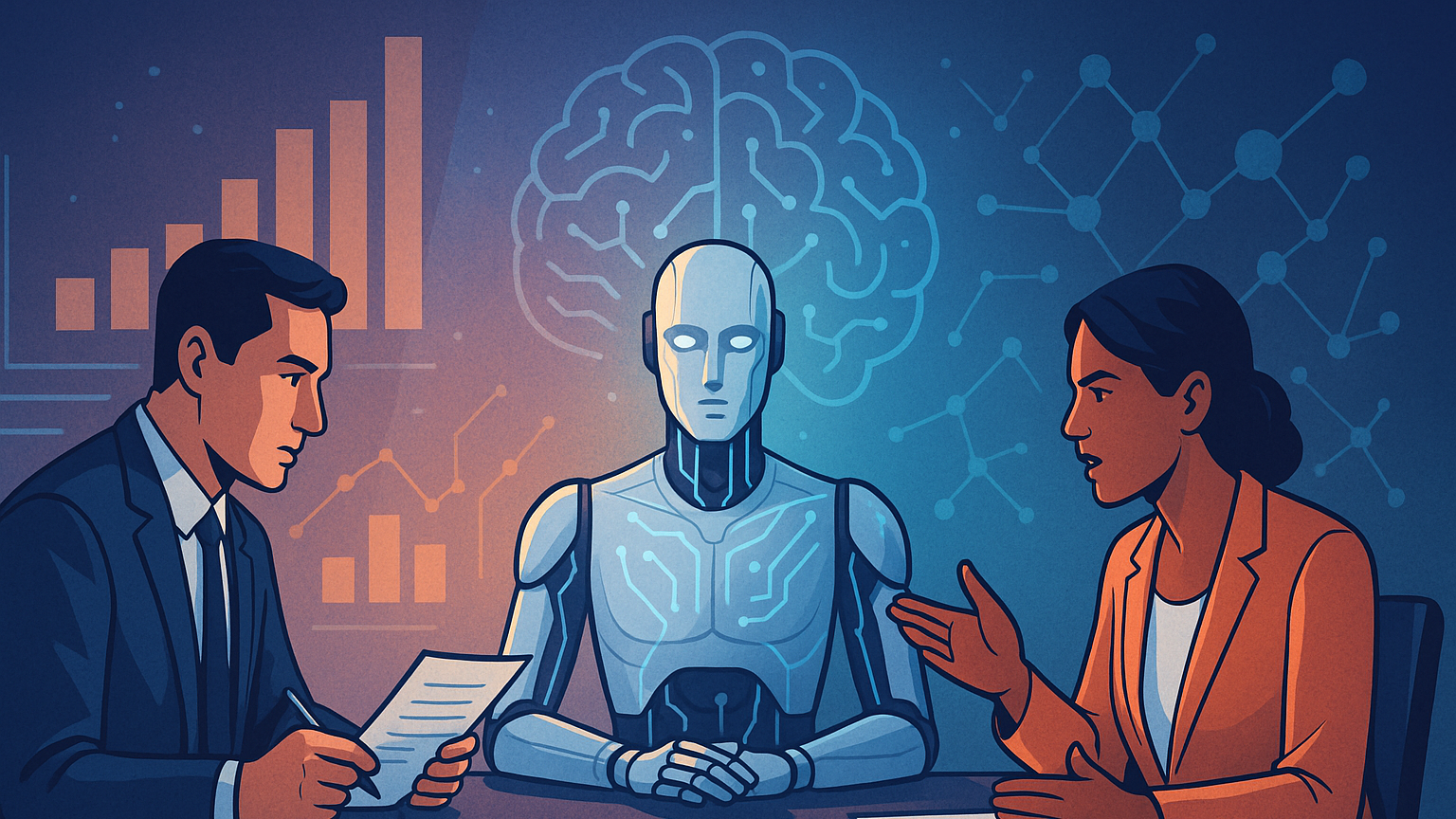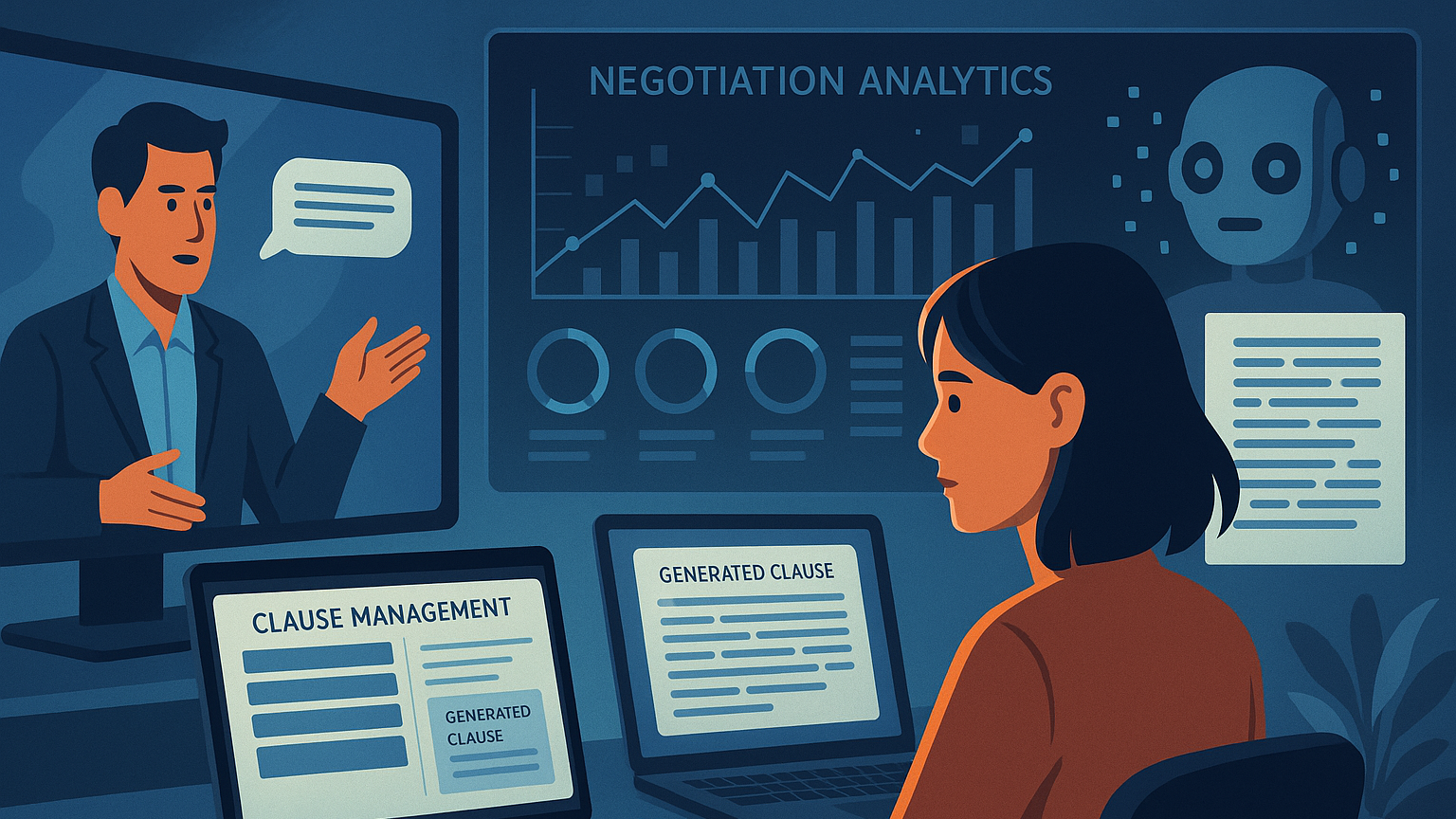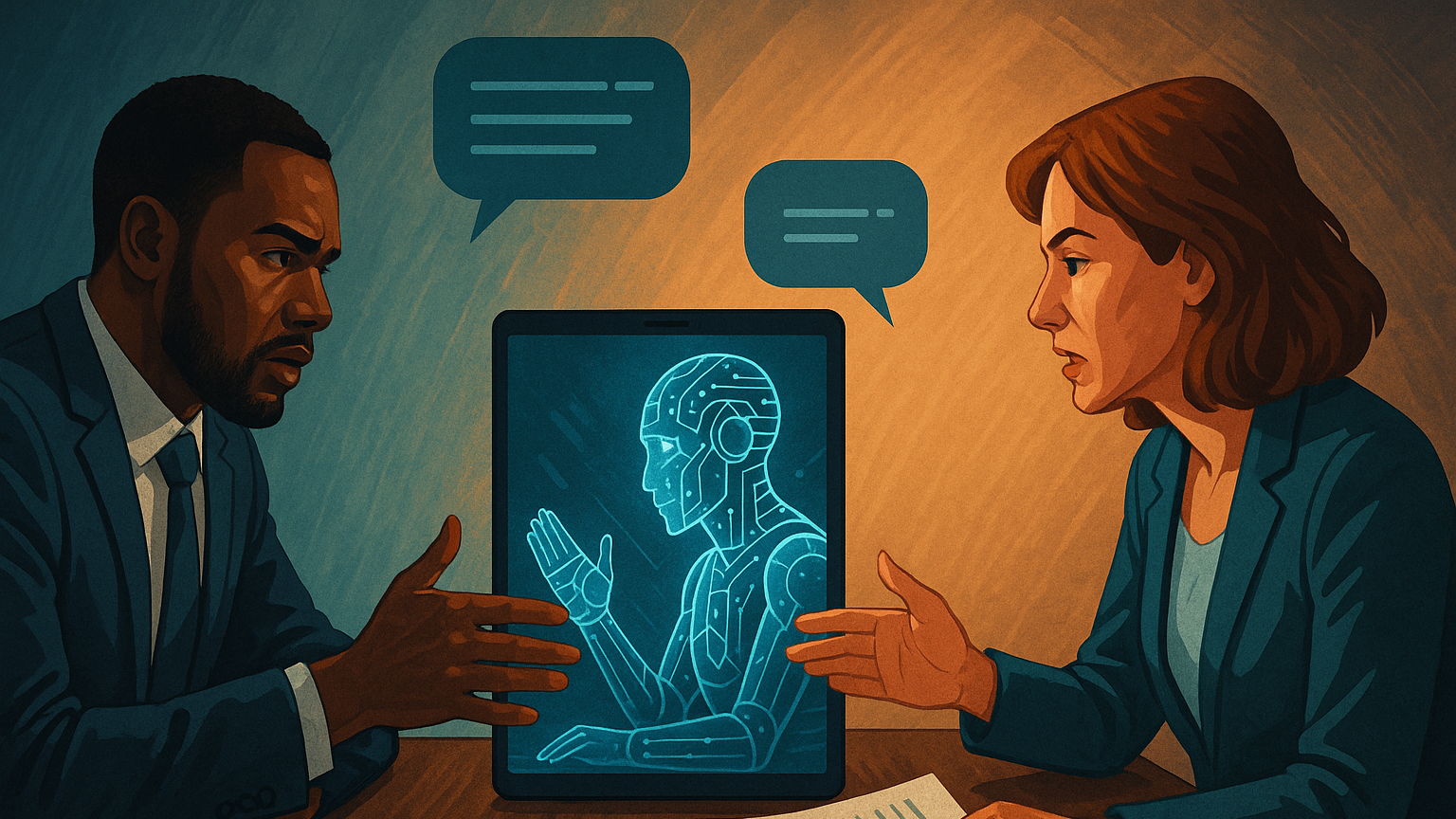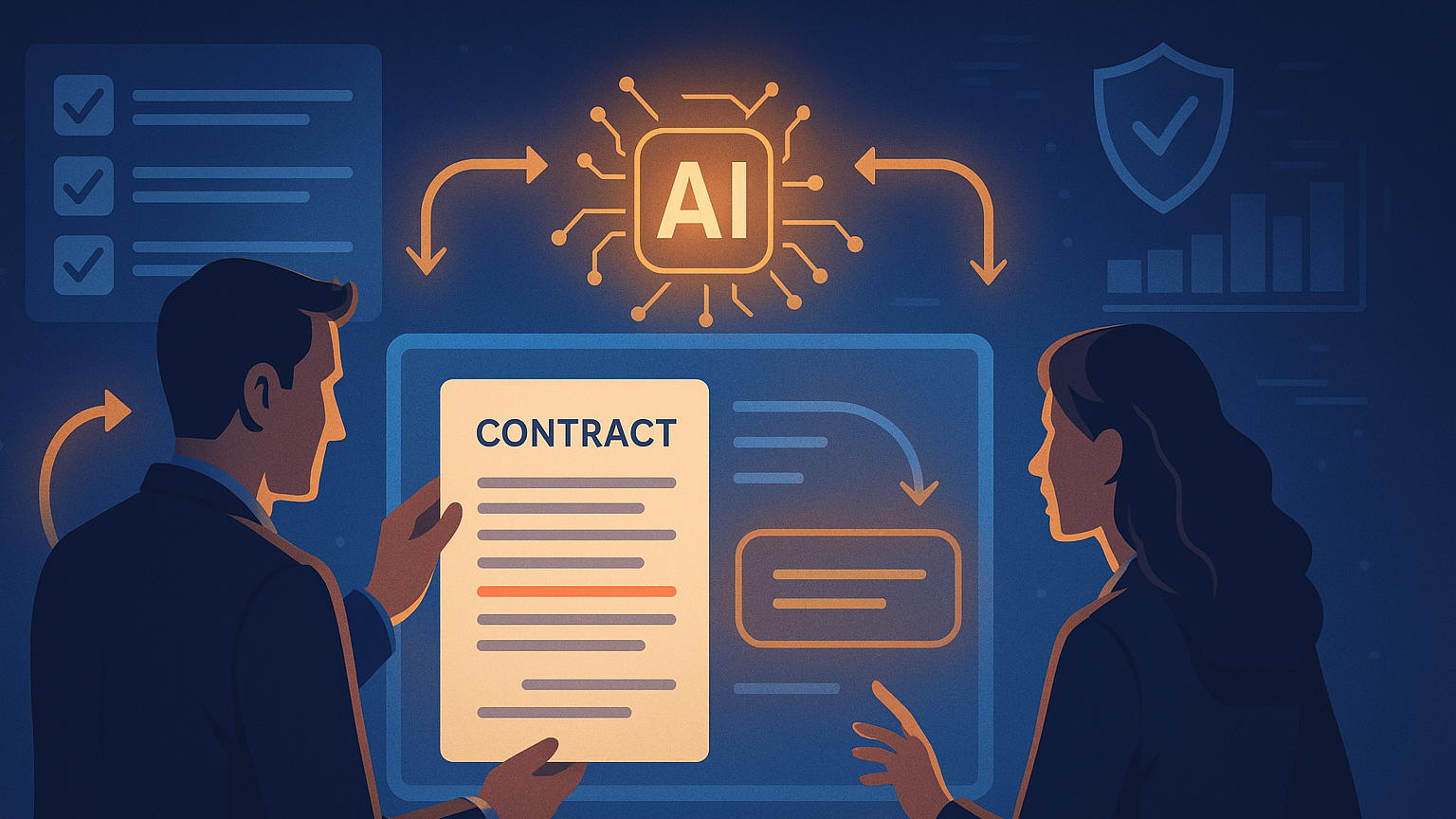
AI in Training & Development for Smarter Contract Negotiation
You’re stepping into a world where contract negotiation is rapidly evolving because AI is becoming a practical partner — not a sci-fi substitute for human judgment. This article walks you through how AI is changing negotiation workflows, what you should teach your team, how to build programs and tools that actually help negotiators make smarter decisions, and how to measure success. You’ll get concrete strategies for strategic partnerships, partnership negotiation and structuring, and contract negotiation tactics tailored to your industry. The goal is simple: help you increase negotiation effectiveness, reduce risk, and speed up deal cycles while keeping humans squarely in the driver’s seat.

Why AI Awareness Matters for Business People in Negotiation
You need AI awareness because the technology changes not only what’s possible, but how you approach preparation, information asymmetry, and risk allocation. If you don’t understand AI’s capabilities and limitations, you may either over-rely on automated recommendations or miss out on productivity gains that can sharpen your bargaining position. Awareness helps you ask the right questions of vendors, align internal training with realistic outcomes, and design negotiation processes where AI amplifies strengths like analysis and pattern recognition while leaving judgment and ethics to people.
How AI Changes Contract Negotiation Workflows
AI shifts many negotiation activities upstream and downstream of the bargaining table: automated contract review and clause extraction accelerate preparation, predictive analytics guide bid strategy, and post-signature monitoring flags compliance and renegotiation opportunities. You’ll find more iterative, data-driven pre-negotiation phases, fewer surprises from hidden terms, and faster cycle times. At the same time, the actual interpersonal give-and-take remains human, but you’ll be better armed with scenario outcomes, counterparty tendencies, and recommended concession paths based on historical behavior.
Core AI Capabilities Relevant to Contract Negotiation
There are several AI capabilities that will matter directly to your negotiation outcomes: natural language processing (NLP) to summarize and extract clauses, machine learning (ML) models to predict counterparty behavior and outcomes, knowledge graphs to surface related obligations and risks, and optimization algorithms to suggest concession sequences and pricing strategies. Each capability complements negotiation work in different ways—NLP helps you get to substance fast, ML helps forecast likely outcomes, and optimization helps design your move sequence in multi-issue bargaining.
AI-Powered Tools You Should Know
You don’t have to memorize features, but you should know the kinds of tools that will show up: contract lifecycle management platforms with AI-driven clause libraries and risk scoring, negotiation analytics dashboards that surface patterns and KPIs, virtual role-play simulators that create realistic counterpart behavior, and generative drafting assistants that produce negotiation-ready language. When evaluating tools, pay attention to model explainability, data ingestion requirements, and how the tool integrates with your existing systems.

Training & Development: Building AI Literacy in Your Team
Training should make AI literacy practical, not academic. Your team needs to understand what AI can and cannot do, how to read model outputs, and how to translate insights into negotiation actions. Start with short, role-based modules: legal and risk teams should learn to vet model outputs and verify clause transformations, commercial teams should focus on interpreting predictive analytics and scenario planning, and senior leaders should understand governance and ethical tradeoffs. The goal is to make everyone comfortable asking the right questions of AI and interpreting recommendations appropriately.
Designing a Negotiation Training Program with AI
You’ll get the most ROI by designing a program that blends theory, hands-on tool use, and real-world case reviews. Begin with workshops that explain negotiation theory (BATNA, ZOPA, value creation) and overlay AI capabilities that support each element. Follow with tool walkthroughs, sandboxed exercises with anonymized past deals, and live simulations where AI provides real-time recommendations that participants must accept, modify, or reject. Finish with change-management sessions that set new norms for how AI suggestions are incorporated into approvals and escalation paths.
Role-Playing and Simulation: Virtual Opponents and Reinforcement Learning
You should use AI-driven role-playing to scale negotiation practice without requiring many human counterparts. Virtual opponents powered by reinforcement learning or behavior-simulated models can mimic counterpart concession patterns, negotiation styles, and even industry-specific tactics. This gives you the ability to spray-test multiple strategies and see how small changes in opening anchors or concession pacing influence outcomes. As a trainee, you’ll practice reading signals, adjusting tactics, and responding to AI-simulated pressure in a low-stakes environment.

Data Preparation: Feeding Models with the Right Contract Data
Models are only as good as the data you feed them. You’ll need clean, well-labeled contract histories, annotated clauses, negotiation logs, and deal outcomes to train or fine-tune models effectively. Prioritize high-quality samples of negotiated clauses and their negotiated states, with metadata such as counterpart industry, deal size, legal team, and negotiation duration. If your data is siloed, plan a data harmonization effort — consistent naming, removal of PII where necessary, and normalization of fields will dramatically improve model reliability and the usefulness of insights you receive.
Fine-Tuning Models for Your Industry and Playbook
Generic models will help you at first, but you’ll gain a competitive edge by fine-tuning models to your industry, internal playbooks, and preferred clause language. Fine-tuning can mean training on your past contracts, shaping scoring algorithms to prioritize the risks that matter most to you, or building custom classifiers that detect clauses with nuanced meanings in highly regulated sectors. You’ll need domain expertise combined with data science capabilities for this work; otherwise, you risk overfitting models to quirks or missing systematic biases.
Integrating AI into Contract Lifecycle Management (CLM)
AI becomes most powerful when it’s embedded into the contract lifecycle rather than bolted on. In a CLM context, AI can auto-populate negotiation playbooks when certain counterparties or clause triggers appear, route contracts based on risk scoring, and suggest fallback language during redline exchange. Integration reduces context switching and surfaces recommended actions at the moment of decision. When designing integration, ensure you keep audit trails so that every AI suggestion and human decision is logged for future training and compliance.

AI for Strategy: BATNA, ZOPA, and Predictive Concessions
You should use AI to quantify strategic negotiation concepts that were previously qualitative. Models can estimate your BATNA (Best Alternative to a Negotiated Agreement) by analyzing historical outcomes, comparable deals, and market signals. Similarly, AI can help identify the ZOPA (Zone of Possible Agreement) by comparing historical opening positions and settlement points. Predictive concession models can forecast likely movement from the counterparty given their past behavior, which helps you plan anchors, concessions, and contingent agreements.
Framing Negotiation Tactics Through AI Insights
AI won’t tell you precisely what to say, but it will help you frame tactics with evidence. You can use AI to identify which clauses are most frequently negotiated by a counterpart, the typical length of negotiation, and the points that most often end in stalemate. With that context, you can decide whether to use integrative tactics (trade-offs across issues) or distributive tactics (claiming value on narrow issues). You’ll also learn where to invest time — some clauses benefit more from detailed legal drafting, others from commercial concessions.
Operationalizing AI Recommendations During Live Negotiations
In live negotiations, you’ll want AI outputs to be succinct, timely, and actionable. Build interfaces that present tiered recommendations: a short actionable tip, the reasoning or evidence behind it, and a link to deeper analytics if you want to drill down. Establish human-in-the-loop checkpoints so negotiators can accept, adjust, or decline AI suggestions. Also plan for latency and offline scenarios: ensure you can continue negotiating effectively if AI recommendations are delayed or unavailable.
Trust, Explainability and Human-in-the-Loop Design
Trust is the currency of AI adoption. You’ll build trust by designing for explainability — provide the rationale for each recommendation, show confidence intervals, and surface the data points that influenced the model. Make it easy for negotiators to contest or override recommendations and to flag errors that can feed back into model improvement. A clear governance process that ties model outputs to approval authority will help you avoid blind reliance and increase adoption among skeptical stakeholders.

Legal, Compliance and Data Privacy Considerations
You must account for legal and compliance risks when using AI in negotiations. Sensitive clauses, privileged communications, and personal data in contracts require careful handling. Implement role-based access controls, encryption, and processes to scrub or anonymize data used for model training. Also ensure that AI-generated content doesn’t inadvertently create legal obligations; all AI-drafted or suggested language should be reviewed and approved by qualified professionals before being executed.
Measuring Success: KPIs and ROI for AI in Negotiation Training
You’ll want practical KPIs to evaluate whether AI investments are paying off. Track metrics like reduction in negotiation cycle time, increase in deal value captured, decrease in disputed clause frequency, and improvement in negotiator confidence as measured by surveys. For training programs, measure skill adoption through simulation performance and real-case application rates. Put financial values on time saved and improved contract terms to build a business case, but also measure risk reduction and compliance improvements which may not be immediately monetized.
Case Study: Technology Sector — Speed and Iterative Deals
In technology deals, speed matters and terms evolve rapidly across licensing, SaaS, and partnership agreements. You can use AI to automate standard clause negotiation, rapidly generate tailored schedules, and score risk associated with open source or IP clauses. When you train your commercial and legal teams on AI-assisted drafting and clause negotiation, you’ll reduce cycle times and free senior negotiators to focus on strategic trade-offs like revenue sharing and long-term partnership structures.
Case Study: Pharmaceuticals & Life Sciences — Regulatory Nuance and Risk
In regulated industries like pharma, regulatory clauses and liability allocation are high-stakes. AI can help you flag jurisdiction-specific compliance issues, identify historically negotiated safety language, and surface differences across regional templates. Your training should emphasize verifying model outputs against regulatory expertise and using AI as a triage tool to surface contracts that require deeper legal review. This approach lets you scale routine negotiations while keeping specialized oversight where it matters most.
Case Study: Manufacturing & Supply Chain — Volume and Standardization
In manufacturing and procurement, you’ll often deal with high-volume supplier contracts where standardization is the key to efficiency. AI helps you classify suppliers, recommend standardized clauses for certain risk profiles, and predict supplier negotiation patterns based on past interactions. Training procurement negotiators to use AI scoring for supplier risk and to trust standardized fallback language will accelerate onboarding and reduce procurement leakage.
Case Study: Professional Services & Legal Firms — Augmenting Expertise
For law firms and professional service providers, AI is a force multiplier that speeds document review, clause drafting, and precedent retrieval. You’ll train associates to use AI as an assistant that surfaces relevant precedent and flags inconsistencies, allowing partners to focus on strategy and client counseling. Ethical considerations are front and center here — you must ensure client confidentiality and manage the provenance of AI-suggested language.
Case Study: Startups & Early-Stage Partnerships — Tactical Agility
As a founder or early-stage negotiator, you need agility and protective simplicity in partnership terms. AI can help you understand market norms, propose defensible starter clauses, and quickly iterate templates for co-marketing, reseller agreements, and early partnerships. Training for startups should emphasize when to standardize versus when to seek bespoke counsel, and how to use AI outputs to remain lean without accepting undue risk.
Implementation Roadmap: From Pilot to Scale
Begin with a focused pilot that targets a high-impact use case, like NDA review or supplier contracts. Validate data pipelines, test user interfaces with real negotiators, and measure initial KPIs such as time saved and quality of drafts. Iterate on model tuning and user experience based on feedback, then expand into adjacent contract types. Establish governance, training schedules, and document retention rules as you scale. You’ll find that small, measurable wins build momentum for broader adoption across partnership negotiation and structuring activities.
Choosing Vendors vs Building In-House
Deciding between vendor solutions and in-house builds depends on your resources, domain complexity, and control requirements. Vendors can accelerate deployment with pre-trained models and user-friendly interfaces, while in-house builds give you maximum customization and tighter control over sensitive data. If you choose vendors, verify their data handling policies, model-update cadence, and transparency. If you build in-house, be realistic about the ongoing investment in data science, annotation, and model maintenance you’ll need.
Common Pitfalls and How to Avoid Them
You’ll encounter common pitfalls such as over-reliance on AI, poor training data, lack of explainability, and cultural resistance. Avoid these by setting clear human-in-the-loop rules, investing in data quality up front, requiring model explanations for high-impact recommendations, and creating champions within negotiating teams who model responsible use. Also avoid scope creep; start with a narrowly defined use case and expand only after demonstrating clear value and control.
Future Trends: Smart Contracts, On-Chain Negotiation, and Autonomous Agents
You should keep an eye on trends like smart contracts and on-chain negotiation, which can automate performance-linked clauses and escrow arrangements. Autonomous negotiation agents are emerging, but will first appear in highly standardized, low-risk contexts. Meanwhile, hybrid approaches—where AI generates contract terms and human negotiators selectively approve them—will dominate for more complex or strategic partnerships. As these trends evolve, your training should adapt to teach new verification skills and on-chain legal literacy.
Practical Checklist Before You Start
Before you roll out AI-enabled negotiation training, make sure you have the basics in place: clean and representative contract data, agreement on priority use cases, executive sponsorship, a pilot plan with measurable KPIs, data privacy protections, and a governance framework that defines human override rules. Confirm that negotiators have time in their schedules to practice with simulations, and assign data stewards who will own ongoing quality and annotation processes. This preparation reduces friction and accelerates tangible improvement.
Final Thoughts
You’re not replacing negotiators with machines; you’re elevating them. AI helps you remove low-value friction, surface hidden patterns, and make smarter trade-offs in partnerships and structured deals. The combination of targeted training, careful data practices, and human-centered design will let you capture efficiency gains while preserving judgment, ethics, and client trust. Start small, measure rigorously, and let your negotiators grow confident using AI as an indispensable decision support partner.
